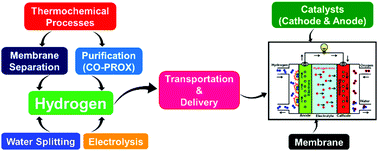Development of advanced materials for cleaner energy generation through fuel cells
Abstract
As per the new policy scenario on primary energy, it is anticipated that fossil fuels will continue to meet 74% of the required energy demands, which would emit greenhouse gases (GHG) into the environment. However, our dependence on fossil fuels can be reduced significantly through the adoption of sustainable goals to meet the energy demands, particularly in the transportation sector. The implementation of decarbonization technologies based on renewable energy resources in the transportation sector are vital to create zero emission zones. The use of fuel cells in the transportation sector holds promise as a sustainable option for the generation of cleaner energy along with cumulative lesser GHG emissions. In this article, the state-of-the-art and current advancements in the fuel cells pertinent to the production and purification methods of hydrogen (H2) and development of materials are discussed. In particular, the material developments and their performance as well as the limitations related to preferential oxidation of carbon monoxide, H2 separation membranes, electrolysis, photocatalytic water splitting for H2 production, storage, and transportation using liquid organics, fuel cell membranes, and catalysts for electrodes for the fuel cells are focused in detail.

- This article is part of the themed collection: 2020 Focus and Perspective articles


 Please wait while we load your content...
Please wait while we load your content...